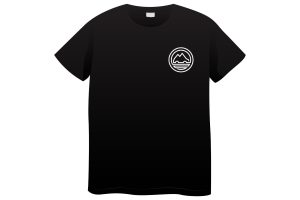Views: 22
How To Start a T-Shirt Business in Nigeria 2025 (Step-by-Step)

Selling custom t-shirts online is a great way to make extra money. The t-shirt printing market keeps growing annually. With online tools, you can easily design, print, and sell your own t-shirts.
If you are finding it difficult on how to starts t-shirt business in Nigeria in 2025, then ensure you pay attention to the details in this post. To succeed in a t-shirt business as a newbie, you need to find the right customers and create designs they will love. By keeping costs low and choosing a strong niche, you can build a profitable t-shirt business. In this post we’ll look at nine simple steps on how to start a t-shirt business in Nigeria in 2025.
Nine Steps on How to Start a T-Shirt Business in Nigeria in 2025
- Discover your Niche
If you want to start a successful online T-shirt business, choosing the right niche can make a big difference. A unique store—whether through branding or product selection—has a much better chance of standing out and attracting customers.
Before you begin, take time to research. Look at other online T-shirt stores, both local and international, and see what makes them appealing. Pay attention to their designs, branding, and pricing. Write down anything that catches your eye and think about how you can improve upon those ideas to make your store even better.
You can focus on any niche that interests you. If you notice an area with little competition, it could be a great opportunity. A less crowded market makes it easier to get noticed and often reduces marketing costs. By carefully choosing your niche and adding your own creative touch, you can build a T-shirt business that stands out and succeeds.
- Pick a reliable printing partner
Once you have your T-shirt designs ready, the next step is finding a reliable printing partner to bring them to life.
A great option is print-on-demand, a low-risk business model where products are made only after a customer place an order. This means you don’t have to buy inventory upfront or manage storage. Instead, the printing process is automated, and you simply upload your designs onto ready-made T-shirt blanks.
Print On Demand works like dropshipping but with the added advantage of customization. Since you only pay when an order is placed, startup costs are low—aside from platform fees for your online store. This allows you to launch your business without the challenges of running your own printing operation.
However, choosing the right Print on Demand partner is crucial. They handle production, shipping, and inventory, so you need a company that is reliable and produces high-quality prints. Here are some key factors to consider:
- Pricing – Compare fulfillment and shipping costs to keep your business profitable.
- Location – A provider with facilities near your customers ensures faster, more affordable shipping.
- Quality – Look for high-quality materials and printing methods.
- Customer support – Choose a company with quick and helpful support in case of issues.
- Reliability – Check how long it takes to fulfill orders and whether they communicate about delays.
- Reputation – Read reviews to see if other sellers are happy with their service.
Taking the time to find the right Print on Demand partner will help your T-shirt business run smoothly and keep your customers satisfied.
- Choose high-quality t-shirts
T-shirts are the same differ in fabric, weight, thickness, and texture. The best T-shirt for your brand depends on your printing method, the season, and what your customers prefer—such as eco-friendly materials or full-print designs.
The three most common fabrics are:
- Cotton – Soft and breathable, great for everyday wear.
- Polyester – Lightweight and durable, ideal for sportswear.
- Cotton-poly blends – A mix of both, offering comfort and durability.
Choosing the right fabric also depends on how you plan to customize your T-shirts. Some printing techniques work better on certain materials:
- Direct-to-garment (DTG) – Works best on cotton for detailed prints.
- Sublimation (all-over print) – Ideal for polyester fabrics.
- Embroidery – Best for thicker materials with a tighter weave.
If you want to sell high-quality T-shirts, it’s important to pick the right material for your designs. Research different options to ensure your products look great and feel comfortable for your customers.
- Create unique designs
Designing is where you come up with ideas that your target audience will love. Start by researching the latest trends and looking for inspiration online. Pay attention to designs that catch your eye and think about how you can mix popular trends with your own unique style. Whether you want bold statements, funny graphics, or simple designs, there are many options to explore.
However, before listing your T-shirts for sale, order samples to check the quality, fabric, and how the design looks in real life. A bad print or poor placement can disappoint customers, so make sure everything looks professional. Also, test how the design appears on different body shapes and fabric colors. Placement matters—logos often look best on the chest, sleeve, or inside label.
You also need to understand that creating a T-shirt is not just about the design—it’s also about building a strong brand. Spend time brainstorming different ideas and testing variations. It’s hard to predict which designs will connect with buyers, so having multiple options can help.
If you’re not confident in your design skills, you can hire professionals. You can also use online design tools and templates to create great-looking T-shirts yourself.
A strong design is the foundation of a successful T-shirt business. Be creative, test different ideas, and make sure your final product is something customers will love!
- Validate Your T-Shirt Designs
Before you start printing your T-shirts, it’s important to get feedback on your designs. You might think they’re perfect, but others could spot areas for improvement that will make your products even better. To get honest opinions, share your designs in online forums, but be sure to watermark them to prevent theft. You can also reach out to local design consultants for professional advice. Their unbiased feedback can help you refine your ideas before launching. Discussion platforms like Reddit are also useful for testing how people react to your designs. Getting different opinions will give you a better idea of which T-shirts are most likely to sell well.
- Set up an online store
After you are done with your T-shirt designs, the next step is setting up your online store. There are different ways to do this, depending on what works best for you.
You can create a store using an all-in-one eCommerce platform like Shopify, komback, or BigCommerce. These platforms make it easy to set up and manage your business.
If you prefer selling on established marketplaces, you can list your T-shirts on Amazon. These platforms already have large audiences, making it easier to find customers.
Choosing the right platform depends on your needs and goals. Take some time to explore your options and pick the one that suits your business best.
- Set prices
To run a successful T-shirt business, you need to set prices that allow you to make a profit while staying affordable for customers. If your prices are too high, people may not buy. To find the right balance, check what similar businesses are charging.
Before setting a price, add up all your expenses, including:
- Design costs – Paying for artwork or hiring a designer
- Production costs – Printing and materials
- Shipping costs – Fees for delivering products to customers
- Taxes – Any sales or business taxes
- Platform fees – Costs for using an eCommerce site or marketplace
Once you know your total costs, add a profit margin to decide your selling price. Be open to adjusting prices based on customer demand, market trends, or inflation.
A well-planned pricing strategy helps keep your business profitable and competitive. Take time to review your pricing regularly to ensure you’re making the best decisions.
- Market Your Shirts
To successfully sell your T-shirts, you need to make them visible to the right buyers. By now, you should have a clear idea of who your target customers are—their age, interests, and where they spend time online. Social media is one of the best ways to promote your products. Platforms like Instagram, TikTok, Facebook, YouTube, Twitter, Pinterest, and WhatsApp can help you reach your audience. Use these channels to showcase your designs and connect with potential buyers. Think about where your ideal customers spend their time. If your T-shirts are perfect for Gen-Z, advertise in places they visit online and offline. Besides selling on your website or online marketplaces, you can also promote your T-shirts at trade shows, local markets, and other in-person events.
By kingkentus








You must be logged in to post a comment.